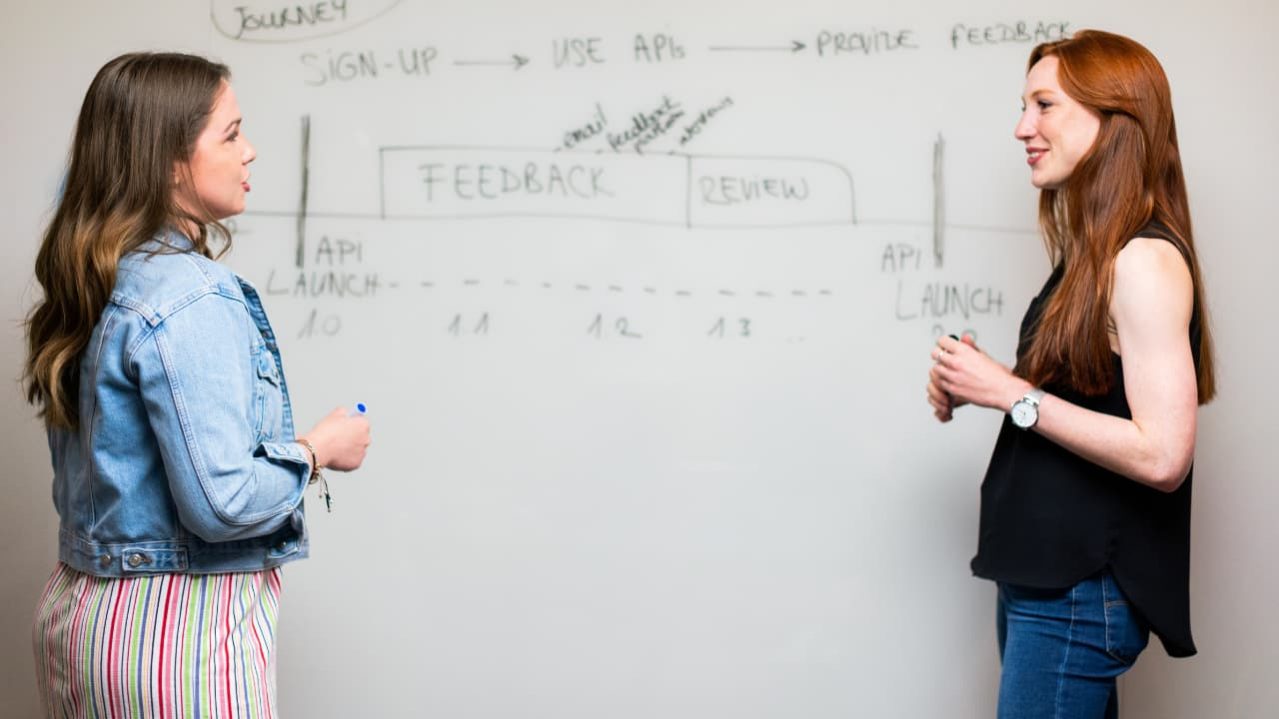Is there the perfect Russian conversation practice?
You are in Moscow and you want to visit the Kremlin. But you got lost. No problem, you just ask a local for the way. Unfortunately, you can’t follow his description. Thus, you say, “Извините, я не понимаю. Sorry, I don’t understand.” He smiles, then he rephrases his formulation and says slowly, “Идите прямо и потом поверните направо! Go straight and then turn right!” Additionally, he excessively points in a direction and makes a gesture in the shape of a right turn. Now you know where to go.
This shows the huge benefit of a Russian conversation. You gave the native speaker feedback as you indicated that your Russian is not that good. Consequently, the conversation partner adapted to your level and made his words more understandable. Hence, together you solved the problem successfully. Furthermore, you were really engaged in the conversation because it is relevant to understand the answer if you want to visit the Kremlin.
In the end, your success depends on the quality of the conversation.
Basically, an interaction is the best source to learn* a language. It consists of the two required elements: motivation and comprehensible input beyond your current level. However, a conversation is only an opportunity to improve your language skills. In the end, your success depends on the quality of the interaction. This leads me to the intriguing question.
Is there a perfect conversation to improve your language skills?
Let’s take two extreme forms of a conversation and analyze their effectiveness. The interesting thing is that these two examples are the most extreme options of conversational practice and the most popular ones at the same time.
Informal chat with a Russian friend is fun
In the first case, you meet a Russian friend in a café and you have an informal talk. This corresponds with the well-known method “I have Russian friends”.

What are the positive characteristics of this conversation?
1. Meaningful and relevant for your personal life
Usually you talk with a friend about topics you want to talk about. This means it is interesting. Moreover, you care about the outcome of the conversation. This results in healthy negotiations, which is a great source of language acquisition.
2. Motivation
Hopefully, the conversation occurs voluntarily. This indicates that you are intrinsically motivated to talk with your friend, which is one important requirement to improve your language skills.
3. An informal chat is flexible
You have the chance to change the nature of the interaction and so discover new language patterns. This feeling of being in charge is also highly motivational. (This is only true when your friend is a good listener.)
4. Fluency beats accuracy
The objective of the interaction is to exchange personal information and not to correct the other person which interrupts the natural flow of an interaction.
5. Familiarity gives you confidence
The relaxed atmosphere makes it easy to create an engaging conversation and lowers the emotional filter.
What are the downsides of this conversation?
1. Not getting challenged
Just having an enjoyable conversation is not enough. You need to get challenged to improve your Russian. However, this is not the aim of a friend who only wants to exchange information.
2. Familiarity leads to redundant information
The disadvantages of familiarity might even outweigh its benefits. You receive similar information when you interact with the same person. This lack of variety is a big downside. I think I don’t need to explain the strength of diversity.
3. Not receiving feedback
Yes, fluency is the primary goal. However, it is necessary to get some feedback to fix big mistakes that impair the meaning of your formulation. Since a friend often knows what you mean, he doesn’t always invest the energy to correct you.
4. Switching to English
Rephrasing sentences and setting up an understandable context requires energy. As a result, your friend will probably switch to the lingua franca (often English) occasionally.
5. Lack of focus
Of course, you want to hang out with your friend and a have a good time. But talking in café or bar is maybe not the best place to remain concentrated. Additionally, external influences caused by socializing decrease your absorptive capacity.
Formal interaction with a teacher is structured
Let’s take a look at the spectrum’s other end of conversational learning. You have a formal interaction with a teacher in a classroom. Moreover, the teacher uses a rigid syllabus (schoolbook) and gives you clear instructions (exercises) during the conversation.

What are the positive characteristics of this conversation?
1. Comprehensible input
The structured nature of the lesson helps you to better understand the meaning of the conversation. As you already know, this is one cornerstone of language acquisition.
2. Getting challenged
A teacher is eager to show you new things. Therefore, he invests time and energy to challenge your current knowledge. This results in improvement.
3. Receiving feedback
The teacher’s ambition is also visible in the form of receiving corrective feedback. (This is only helpful as long as it doesn’t harm fluency).
4. Variety of information
A teacher usually tries to use different learning materials and so provides you access to diverse information. This goes hand in hand with getting challenged.
5. Focus on language learning
The whole environment is set up to foster your concentration. You don’t get distracted by other things.
What are the downsides of this conversation?
1. Fake topics
There is a high chance you must talk about things that are not relevant or meaningful for your personal life. This makes it more difficult to follow and keep engaged.
2. Rigid structure
The overload of instructions limits your influence to shape the conversation. The dependence on a syllabus restricts the opportunities to be flexible and adapt to your individual needs. If you don’t have an impact, why should you care?
3. Accuracy undermines fluency
I said that corrective feedback is a positive aspect. However, correcting every small mistake undermines fluency. Moreover, your brain can’t memorize every piece of advice during a conversation anyway.
4. Low communicative value
The big advantage of structure is the increased comprehensibility. However, teachers often reduce the value of a conversation by modifying the input itself. Instead of using a familiar context like relating the conversation to your travel experiences, they just construct oversimplified phrases. Example: The teacher shows you a pen and asks, “Is this a pen?” And you answer, “Yes.”
5. No initial motivation
It is very difficult to generate motivation since the lesson is not part of your personal interest automatically.
Can we combine the best of both worlds?
Both extreme cases have positive and negative points. In very simple terms, neither hanging out with your Russian friend or doing exercises with a teacher represents the perfect conversation to improve your Russian skills. The crucial question is: Can we combine the advantages and eliminate the disadvantages?

The answer is yes. However, it requires diligent work. I suggest that it is easier for the teacher to move towards the informal end of the spectrum than for your friend to provide a challenging and comprehensible interaction; because the teacher’s primary motivation is to help you with acquiring Russian and not to socialize.
Therefore, a conversation should be seen as a task. This is the reason why certain computer games are so successful. They are developed like an exciting task, difficult enough to challenge you but easy enough to prevent you from giving up. Furthermore, the language task must be relevant for you to keep you going. When we think about the story in the introduction, we get a clear picture of an effective task embodied in a conversation.
The most difficult part is to develop and moderate such a meaningful and engaging task. This is exactly what we do for you. The perfect conversation.
*Actually the right term is acquire. But I use learn interchangeably because of its relevance in common usage. If you want to know the difference between acquire and learn, then I refer you to this article.
Sources:
Ellis, R. 2005. Instructed second language acquisition: a literature review. Research Division, Ministry of Education.
Long, M. H. 1983. Native speaker/non-native speaker conversation in the second language classroom. In M. Clarke & J. Handscombe (Eds.), On TESOL ’82: Pacific perspectives on language and teaching.


